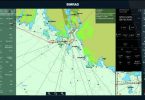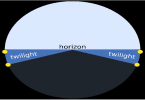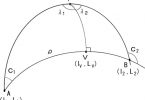- General geodetic solution for station coordinates, orbits, and other parameters of interest.
- Direct geodetic point positioning at a stationary, solitary station using a “geodetic quality”, dual frequency GPS receiver and NIMA Precise Ephemerides and Satellite Clock states (note that the effects of Selective Availability (SA) must be removed).
- Same as above but using the Broadcast GPS Ephemerides and Clock States.
- GPS differential (baseline) processing from known WGS sites
- GPS Precise Positioning Service (PPS) navigation solutions
- Instantaneous
- Mean over some averaging interval
- Photogrammetrically-derived coordinates
- Map-derived coordinates from digital or paper products.
- By Local Geodetic Datum to WGS 84 Datum Transformation.
- Because geospatial information often originates from multiple sources and processes, the absolute accuracy of a given WGS 84 position becomes very important when information from these various sources is combined in “Geographic Information Systems” or “geospatial databases”. Because of their high fidelity, surveyed WGS 84 geodetic control points can often serve to improve or validate the accuracy of maps, image products or other geospatial information. Even GPS navigation solutions can serve a similar role, as long as the accuracy of these solutions is well-understood.




